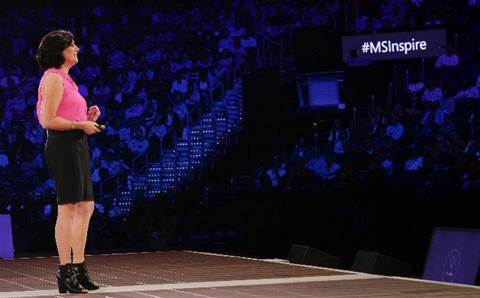Microsoft has shed light on the rationale behind changes to its partner sales model and given details on new sales incentives the company hopes will better meet the ways its partners operate.
“This is the biggest change we have made in over a decade,” Gavriella Schuster, Microsoft’s corporate vice president for global partner channels told partners regarding the company’s commercial sales overhaul at Microsoft Inspire 2017.
The One Commercial Partner group channel manager said the change was driven by the company’s realisation that sales had not changed as quickly as the rest of the company.
“We have innovated on our engineering and our services and we've innovated on our business models, but we have lagged in the innovation in our sales model, and it shows. We have challenges in customer engagements and some missed opportunities that I frequently hear about from all of you. And it's time to change,” she said.
“We were missing opportunities [with partners] because we were constraining ourselves through our licensing, through our customer segmentation, through our geographic boundaries, we were missing opportunities and we were asking the wrong questions.
“I think I stood on this very stage last year talking about transformation and change. We asked you to change and you did, and then we didn't notice. “
New roles and incentives
Schuster reiterated some of the ways Microsoft would update and simplify its channel and explained the new channel manager roles the company had created. Additionally, she detailed new partner incentives aiming to solve conflict between cloud solutions and enterprise agreements.
“There's this funny thing called CSP-EA conflict. And I get emails from you every day in my inbox about it. And we have to fix that,” she said.
Microsoft will incentivise its sellers to “give them the total contract value of every Office 365 seat you sell through CSP”.
“We want them to sell your packaged solutions. So this new ISV cloud embed licence that you can sell through CSP gives us end customer value, which enables us to pay our sellers on it... enables us to actually incentive our sellers to sell your solution,” Schuster said.
Microsoft will also now only pay its sellers, including enterprise sellers, field management and country general managers, on Azure consumed revenue, as opposed to projected revenue.
“That means they need you because when you sell an Azure solution, an Azure service, the consumption is four times higher. So they will want you in every single deal that they close. And that is how we drive alignment 100 percent between what you want to drive as an outcome and what we want to drive as an outcome,” Schuster said.
She also discussed the new channel manager roles being created, saying it was a role the company “never had in my 22 years at Microsoft”.
“This individual's job is not to be your partner account manager, not to line up with one partner, but to help build an entire partner ecosystem around every single customer in their patch,” she said.
“They do that by sitting in on the territory and opportunity reviews with their account executives and their sales specialists. They do this by managing the P-seller community. They do this by helping partners find other partners to build better solutions together and bring them into their customers in their patch.
“And they're measured on customer success with and through partners.”
Schuster also said a partner development manager role, while not new in name, was not measured on licence type, customer segment, a geography or a workload.
“This individual and their success is measured and aligned with you and your success, your growth, your profitability, your ability to reach all the customers anywhere in the world,” she said.
“By enabling us to split this role into two and think about your business for the long term and our business together in the short term, we create more of a balance around enabling customer success with and through partners and partner success. That's how we are going to simplify our engagement and help you engage with our field.”
The journalist traveled to Washington DC as a guest of Microsoft








.jpg&h=142&w=230&c=1&s=1)



.jpg&w=100&c=1&s=0)
_(8).jpg&w=100&c=1&s=0)










